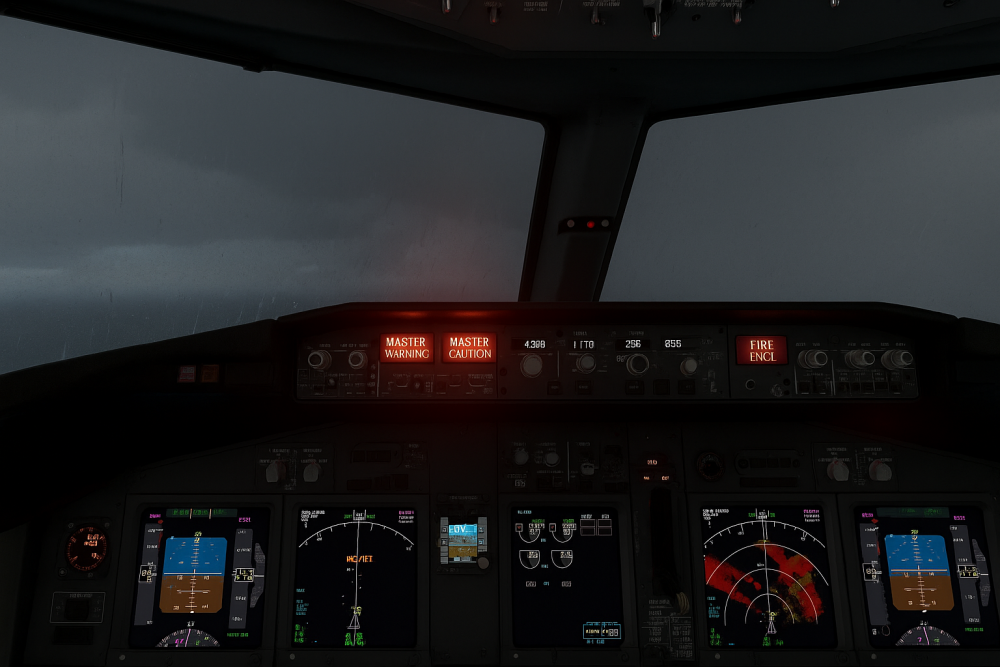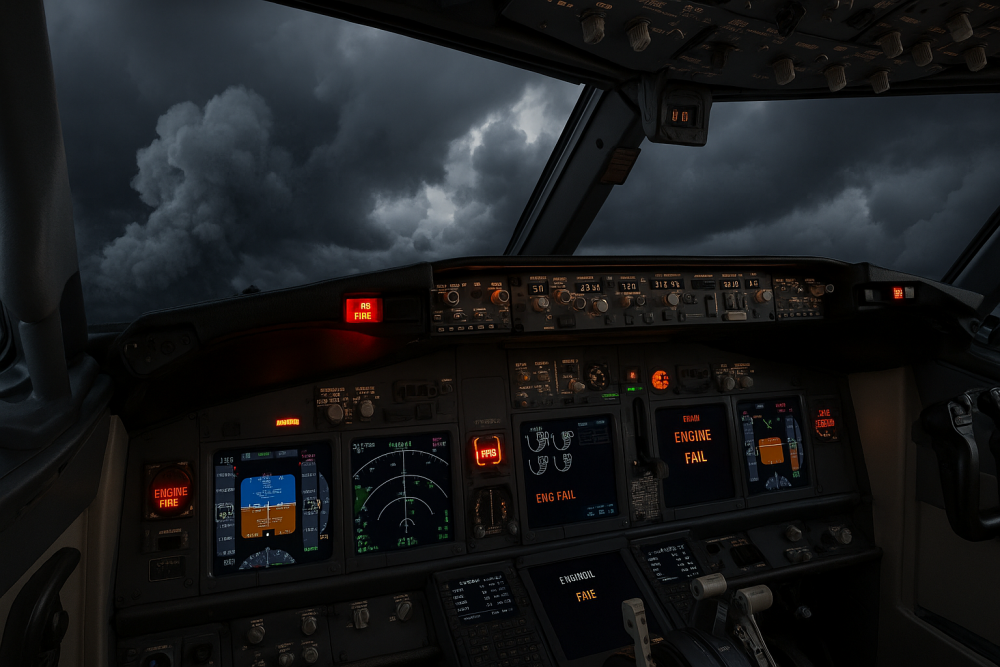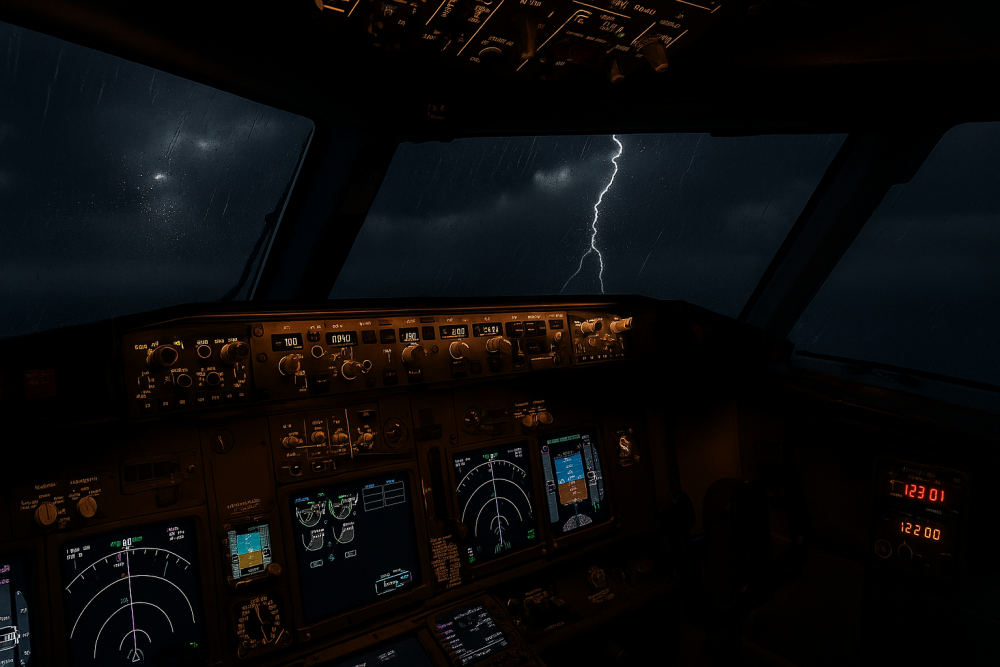Last updated on September 5th, 2025 at 11:28 pm

Simulating emergencies in flight simulators isn’t just a fun challenge—it’s a crucial part of keeps you sharp and prepared. It’s no different than what real pilots do; they practice handling unexpected situations so they can stay cool when things get hairy. What’s awesome about it is how it boosts your confidence. The more you practice, the more you know how to react when things don’t go as planned.
Those hours spent in the cockpit, both virtual and real, make you a better pilot or enthusiast. It’s like training a muscle. 👉 To build foundational skills, click here to learn more about your first virtual takeoff and landing. If you face engine failures or cabin depressurization in a simulation, you’re gearing up for the kind of thinking on your feet that everyday pilots need. You’ll find yourself knowing exactly what to do when the pressure is on.
Now, realism in simulators has come a long way. Programs like Microsoft Flight Simulator 2020, X-Plane 12, and Prepar3D let you dive into these scenarios with amazing accuracy. It’s like a dress rehearsal with no real-world consequences—the perfect environment to get your feet wet with emergency procedures.
Dive into Diverse Emergency Scenarios: Preparing for the Unexpected

Exploring different emergency scenarios can really up your simulation game. Engine failures? Yeah, they’re a classic. But there’s plenty more to keep things interesting, like bird strikes, electrical or instrument failures, and even cabin depressurization. These situations may feel rare when you’re cruising high, but they’re great for testing how you, as a virtual pilot, can handle chaos from the comfort of your home. 👉 For more creative challenges, see our guide on customizing emergency and night flight scenarios.
Each emergency situation comes packed with its bunch of surprises and the adrenaline rush of facing them head-on. Engine failure might be about snagging control without power; bird strike could challenge your composure when sudden damages appear. Fires, on the other hand, test how quickly you can react before things get out of control. Simulating these lets you practice making critical decisions in the heat of the moment.
Make the most of simulator features or aircraft-specific add-ons like PMDG, Fenix A320, or Zibo 737 to recreate these emergencies. The level of detail is what makes these tools perfect for getting an immersive feel of flying under stress. The cool part? You can configure your simulator to throw these surprises at you using built-in systems, making each session a chance to learn something new.
Configuring Failures: Tools and Techniques

Getting into the nitty-gritty, configuring failures in your simulator can make all the difference. Setting up failures to reflect real-life issues is where things start to feel real — it’s a huge step up for immersion. With Microsoft Flight Simulator 2020, diving into Developer Mode lets you manually trigger tons of scenarios. It’s like having the controls to your very own chaos machine.
For X-Plane 12 users, the failure management system is your best buddy. It offers timed or conditional triggers, so you can plan for surprises mid-air. Imagine the scenario: cruising smoothly when suddenly, your instruments decide to play hide and seek. That kind of mid-air surprise feels intense, but it’s totally manageable thanks to how customizable X-Plane’s system is.
Prepar3D also steps up with detailed failure options. Whether it’s an instrument glitch or a total systems blackout, you can simulate issues down to the tiniest detail. It’s all about making that virtual cockpit come alive. You get to be the engineer behind every gulp-worthy moment and trust me, you’ll come out a seasoned pro after navigating through these.
Start by experimenting with each simulator’s tools and see what suits your style. That’s the beauty of simming—you’re calling the shots on how intense things can get. Each simulator has its way of teaching and testing, so make sure you’re open to exploring all the features available.
Simulate Like a Pro: Starting Small and Building Up
When diving into simulated emergencies, it’s smart to start simple. Tackling a single failure scenario is like learning to walk before you run. Whether it’s a basic engine hiccup or an instrument glitch, breaking it down helps you master each situation step by step.
Using real checklists and memory items is key. It brings structure to your response and keeps your workflow organized. 👉 To avoid beginner pitfalls, read this article on common mistakes new sim users make. You’ll feel the real-deal vibe as you work through items just like a pilot does in the actual cockpit. It’s all about muscle memory and ingraining those crucial steps in your mind.
Once you’ve got the basics down, you’re ready to stack the challenges. Maybe throw in some nasty weather or a night-time flight. It cranks up the complexity without overwhelming you. That slow build-up ensures you’re comfortable before hitting more intense scenarios.
Getting comfortable with the controls and your own responses in simple setups helps you confidently tackle bigger and more complex situations. It’s about building that foundation, layer by layer, until you’re ready to handle whatever the sim throws your way.
Taking Immersion to the Next Level: Enhancing Realism

To make your simulation sessions feel like the real deal, adding layers of depth and detail can do wonders. One way to bring that authentic vibe is by using platforms like VATSIM or PilotEdge for air traffic control. You get real-time ATC guidance, making your flight path as close to real-world conditions as possible. It adds another layer of realism—real voices, real instructions, and real-time decision-making that pushes your awareness.
Adding weather dynamics can also crank up the realism. Thunderstorms, fog, or even a heavy rain scenario can dramatically change how an emergency plays out. 👉 Recommended read: Exploring realistic weather mods for added challenge. Try simulating an engine failure when you can barely see the runway or navigating through a thunderstorm while managing electrical issues. You’ll feel the tension and the thrill, all from the comfort of your setup.
Night-time emergencies present another layer of challenge. Low visibility can push your reliance on instruments and your preparedness to new heights. It’s about creating conditions that test your adaptability while building your resilience and skills.
After every flight, reviewing what went down is pure gold. Talk about growth opportunities! Assess what worked, what didn’t, and how you handled each twist and turn. It’s the backbone of improvement, helping you to refine techniques and responses for the next virtual flight.
Every detail you enhance, every scenario you debrief turns you into a more engaged and capable pilot or enthusiast. By making these flights as immersive as possible, you’re not only getting better at the sim but also building a deeper appreciation for the art of flying itself.
✈️ Final Word
Simulating real-life emergencies in your flight sim isn’t just about adding drama — it’s about sharpening your instincts, building confidence, and stepping closer to the mindset of a real-world pilot. Whether you’re practicing engine failures at night or working through checklists mid-storm, every session adds a layer of skill and awareness.
So the next time you fly, don’t just aim for smooth skies — throw in a little turbulence, challenge yourself, and see how far your training can take you. After all, it’s in those unexpected moments where real growth happens — even in the virtual skies.
